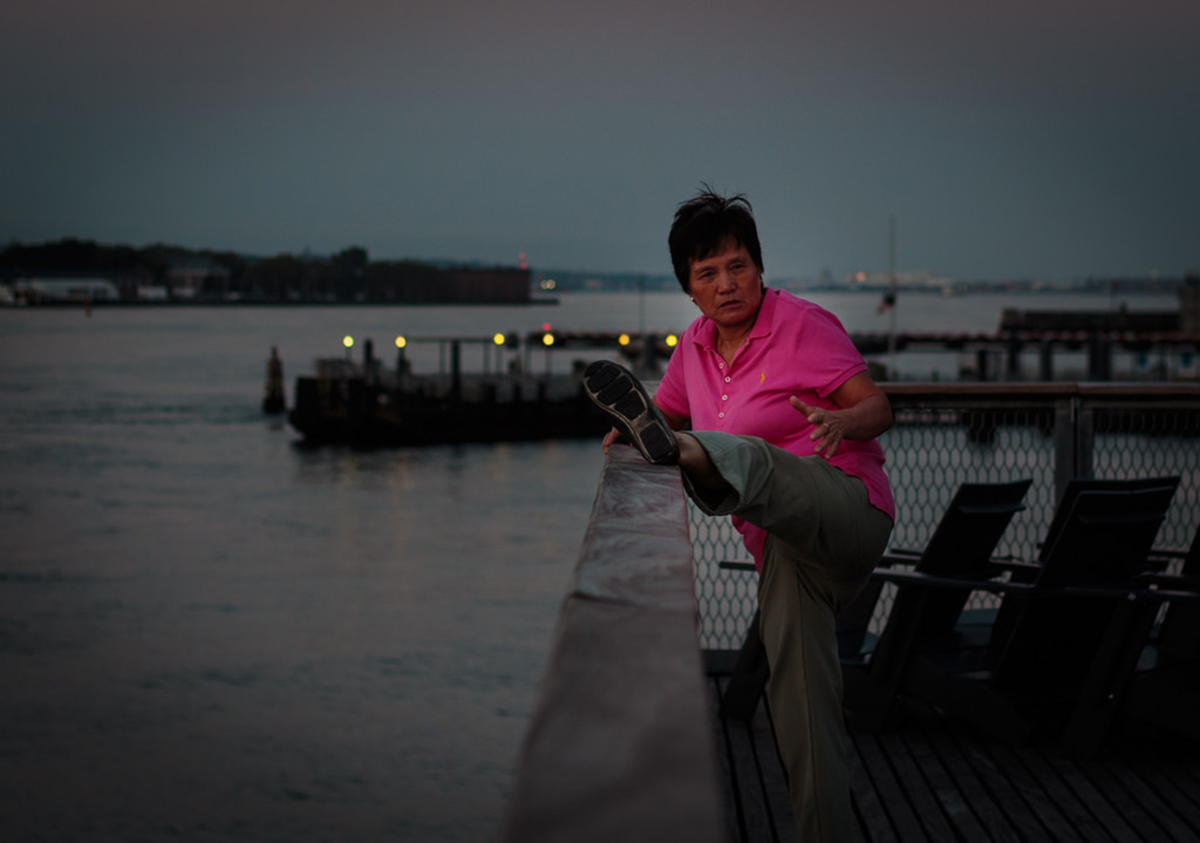Trips and Falls: One of the Biggest Threats to Older Individuals
Falls and their associated injuries, such as hip fractures, tendon or ligament tears, or even simple muscle sprains, are a huge problem for people over the age of 50 and account for a substantial amount of their hospital visits each year.
This becomes an even bigger problem when considering that the recovery capacity of elderly individuals is naturally lower than their younger counterparts, and that their adherence to rehabilitation programs is also usually much lower.

Considering all of the above points, there is a very strong case to be made that prevention is far better than the cure. In fact, this has even been shown in research, with elderly individuals who suffer less falls and hospitalizations usually leading both happier and healthier lives, with a far greater functional capacity and daily activity level.
So, what is the best way to prevent falls?
READ How To Warm Up Before Exercise And Avoid Injury: Do's And Don'ts
Exercise and Falls
Exercise and it's ability to improve functional capacity has been studied nearly as long as exercise has existed. However, the ability of exercise to help reduce the occurrence of falls in the elderly has begun to receive more attention over the last two decades.
This has, in turn, been shown to improve quality of life and health outcomes, which also improve independently of fall rate, over the long term.
The primary reasons for this seem to lie in the increased strength, endurance and, perhaps most importantly, proprioception, which is the scientific name given to an individual’s awareness of their body and it's movements. In fact, there’s been a direct relationship drawn in research between muscle weakness and both single and recurring falls.
In addition to helping prevent the amount of falls an elderly person may experience, there is also evidence that exercise will help reduce the severity of the fall and reduce the amount of 'injurious’ falls, or falls that are serious enough to cause injuries like fractures, tears or sprains.
READ Strength Training Exercises Cut Down Mortality Risk In The Elderly
This benefit most likely stems from an increase in muscle power and reaction time from exercise, which again has been shown to decrease with age and exponentially increase fall risk. As well as the increase in power and reaction, improved proprioception, as mentioned above, also may play a role.
So, we know that exercise can help prevent falling. But is there any particular type of exercise that is superior to others in achieving these benefits?
Exercises and Injury Prevention: The Best & The Most Practical Option
Surprisingly, for a relatively new topic in exercise medicine, this is one area that has been researched quite well despite it’s relatively short time under scientific scrutiny.
In terms of exercise type, everything from flexibility exercises and related disciplines like Yoga, Tai Chi and Pilates have been investigated as well as more dynamic and loaded exercises such as balance training, resistance training and even agility training.

However, in finding the most effective training, research seems to champion balance training, provided that is is sufficiently challenging to the individual. This can include single leg standing, or more advanced drills like stationary superman exercises.
Strength training followed closely behind balance training, which, in turn was followed by stretching and agility training. Endurance exercise such as cycling or walking has also shown to have a positive effect.
However, a combination of balance training and resistance exercise may be the most beneficial as it should help get the best of both world and has shown to be very beneficial in previous research.
As well as the type of exercise done, the amount of it that is carried out is also a significant factor. This was shown in many of the studies which examined the above factors of exercise type, showing that
But, it is worth mentioning that de-training can occur if training ceases for an extended period of time, with a significant loss of benefits occurring within 1 week. So, if sustained benefit is to be maintained training must be continued once it is started.
READ Elderly Who Exercise Regularly Have Better Heart than Healthy Young Sedentary People
Recommendations
So, in closing, any mainstream exercise, but particularly resistance training and balance training, will have a beneficial effect on preventing falls and fall-associated injuries, provided a sufficiently high amount is completed and sustained. With that, below are recommendations for exercise to help prevent falls and injuries in the elderly:
-
Regardless of the activity, increasing exercise will have a beneficial effect on rate of falls, quality of life, mood and daily functioning.
-
Completing 2-3 combined balance and strength sessions per week should provide the best results.
-
Carry out any heavy strength exercises before balance exercises.
-
Ensure balance exercises are adequately challenging.
-
Keep training consistent and regular.
-
Include brisk walking whenever possible as a spare time activity.
- Taking part in activity with a friend or qualified health and fitness professional could improve adherence and results from training.
- 1. Galvao, D. A., & Taaffe, D. R. (2005). Resistance Exercise Dosage in Older Adults: Single‐Versus Multiset Effects on Physical Performance and Body Composition. Journal of the American Geriatrics Society, 53(12), 2090-2097.
- 2. Hauer, K., Rost, B., Rütschle, K., Opitz, H., Specht, N., Bärtsch, P., ... & Schlierf, G. (2001). Exercise training for rehabilitation and secondary prevention of falls in geriatric patients with a history of injurious falls. Journal of the American Geriatrics Society, 49(1), 10-20.
- 3. Latham, N. K., Bennett, D. A., Stretton, C. M., & Anderson, C. S. (2004). Systematic review of progressive resistance strength training in older adults.The Journals of Gerontology Series A: Biological Sciences and Medical Sciences, 59(1), M48-M61.
- 4. Liu‐Ambrose, T., Khan, K. M., Eng, J. J., Janssen, P. A., Lord, S. R., & Mckay, H. A. (2004). Resistance and agility training reduce fall risk in women aged 75 to 85 with low bone mass: A 6‐month randomized, controlled trial. Journal of the American Geriatrics Society, 52(5), 657-665.
- 5. Moreland, J. D., Richardson, J. A., Goldsmith, C. H., & Clase, C. M. (2004). Muscle weakness and falls in older adults: a systematic review and meta‐analysis. Journal of the American Geriatrics Society, 52(7), 1121-1129.
- 6. Orr, R., Raymond, J., & Singh, M. F. (2008). Efficacy of progressive resistance training on balance performance in older adults. Sports Medicine,38(4), 317-343.
- 7. Sherrington, C., Tiedemann, A., Fairhall, N., Close, J. C., & Lord, S. R. (2011). Exercise to prevent falls in older adults: an updated meta-analysis and best practice recommendations. New South Wales public health bulletin,22(4), 78-83.
- 8. Sherrington, C., Whitney, J. C., Lord, S. R., Herbert, R. D., Cumming, R. G., & Close, J. C. (2008). Effective exercise for the prevention of falls: a systematic review and meta‐analysis. Journal of the American Geriatrics Society, 56(12), 2234-2243.
- Photo courtesy of Braiu: www.flickr.com/photos/braiu_74/23260390571/
- Photo courtesy of freepik.com


Your thoughts on this